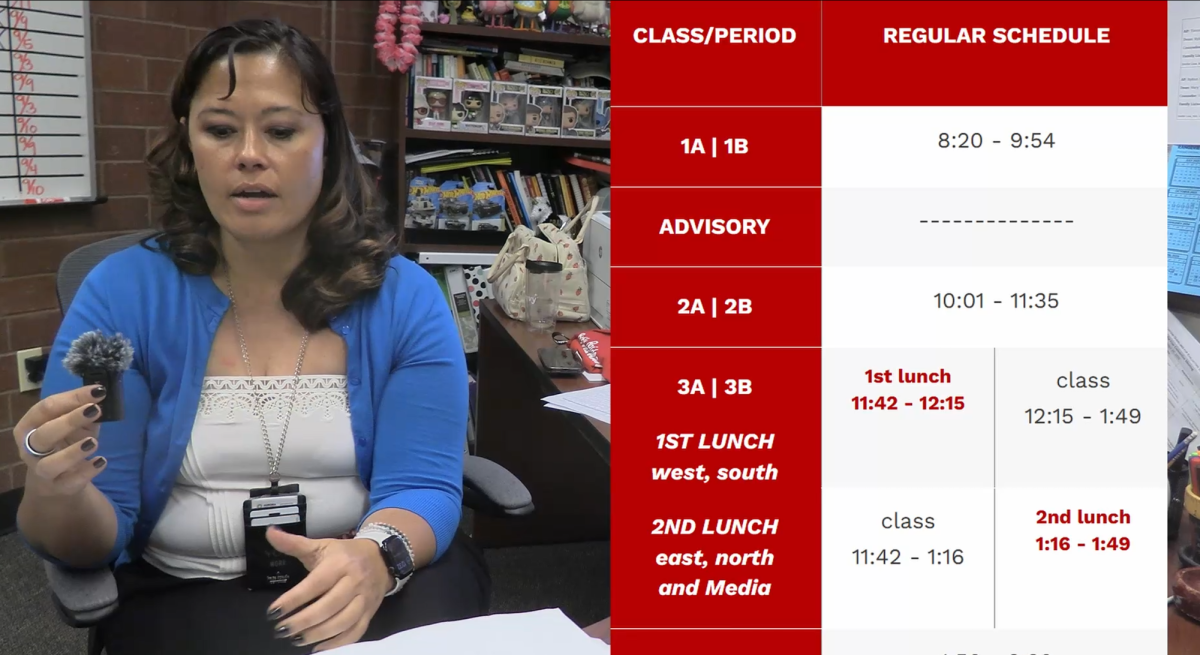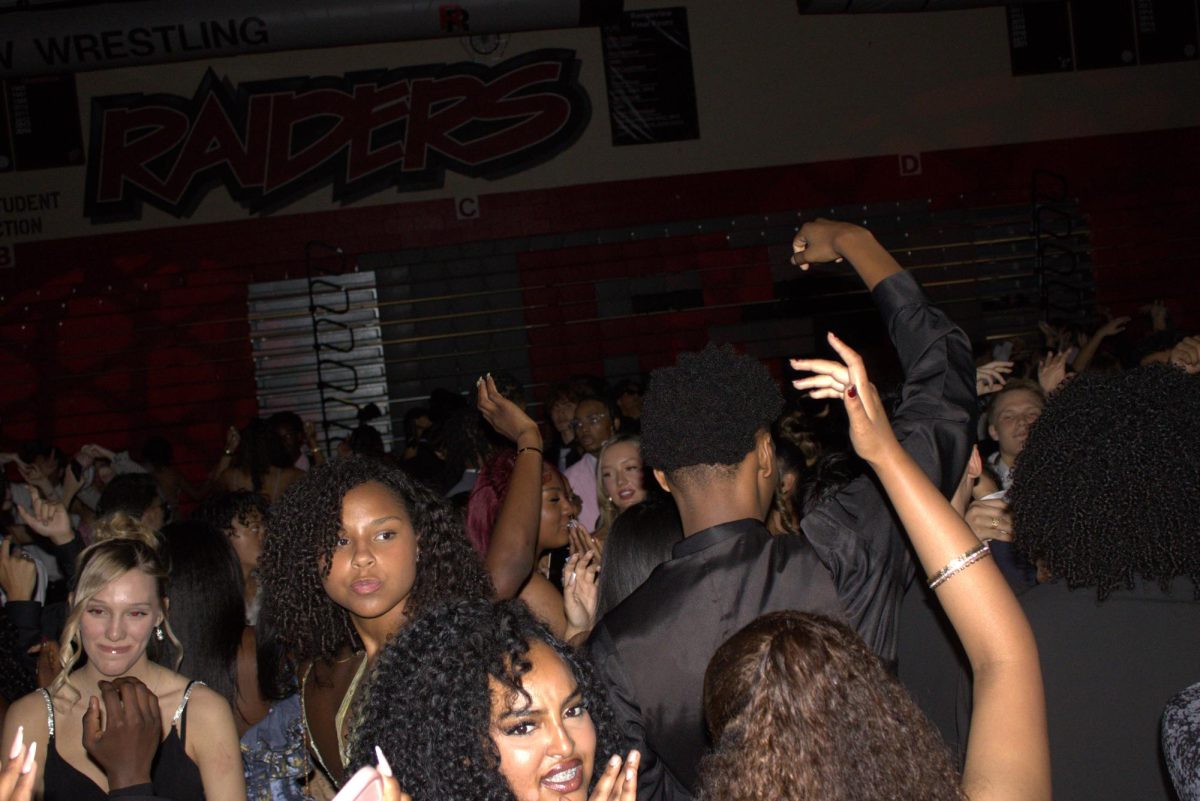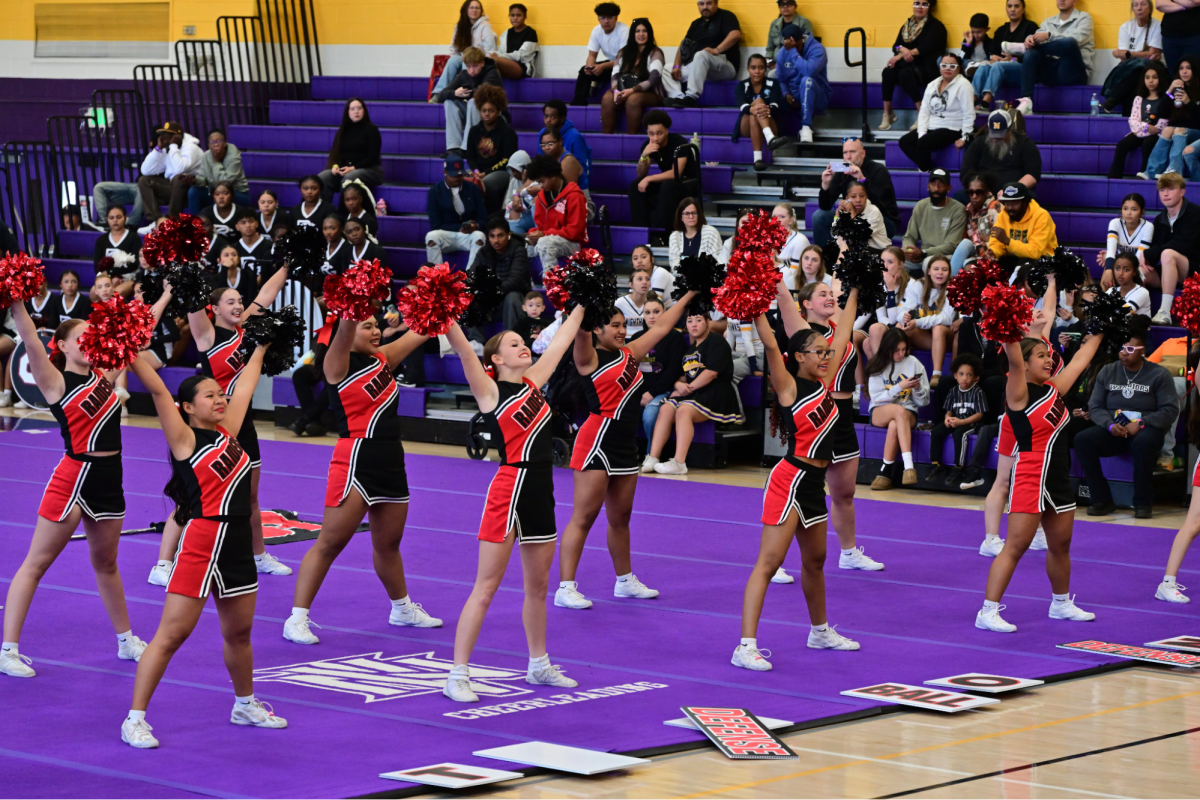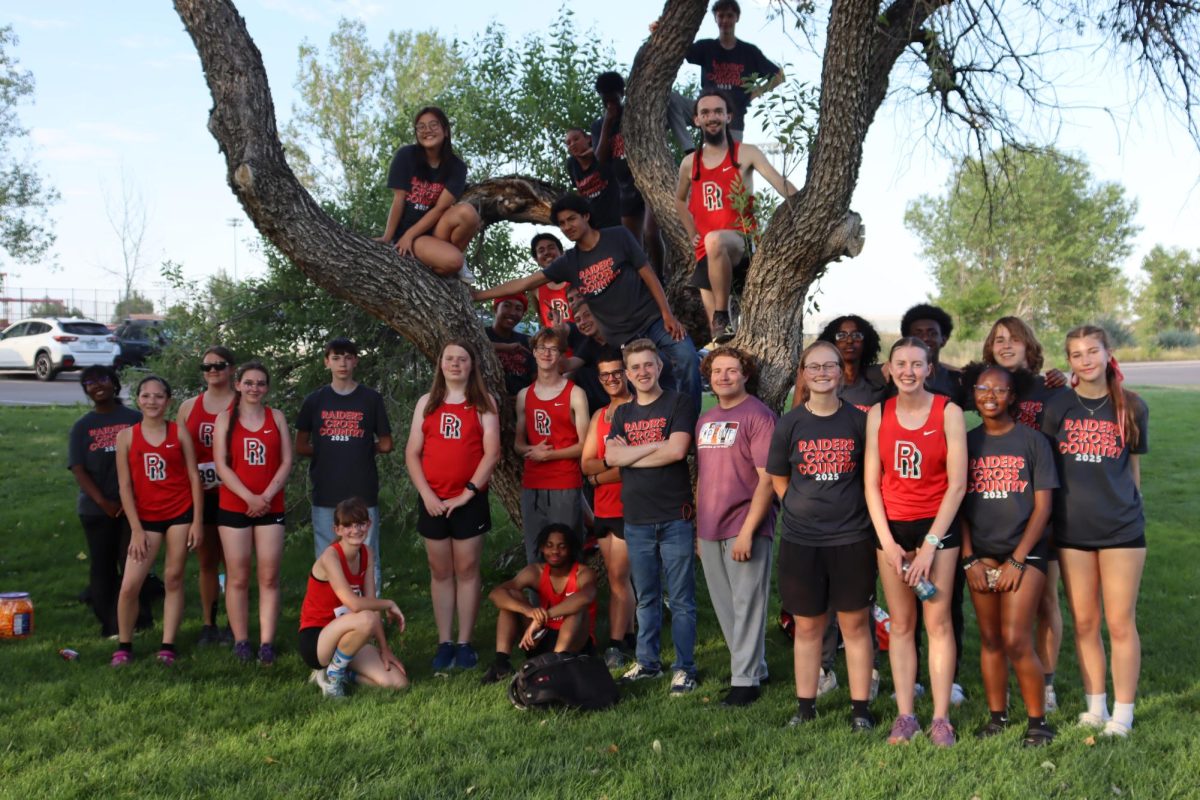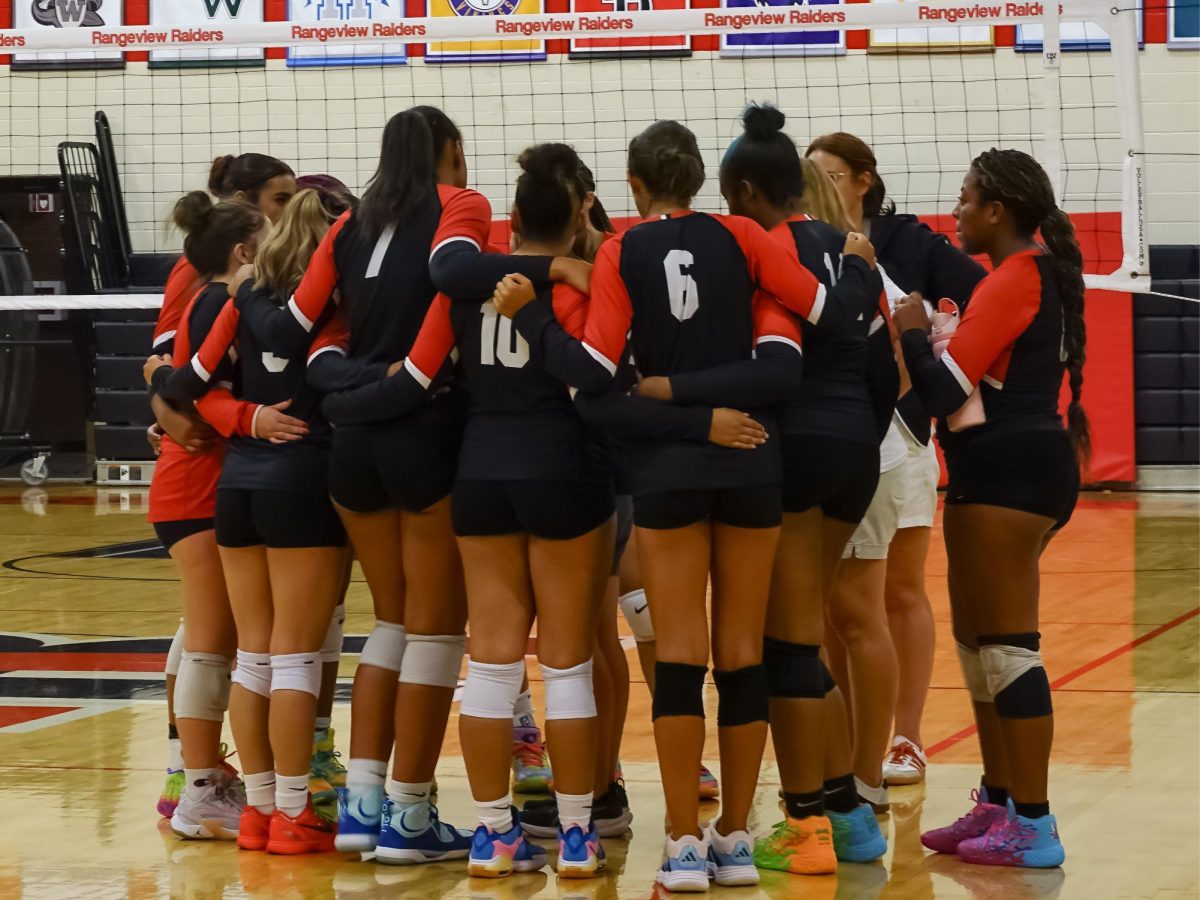Feature Photo By: Izzy Honey – Freshman Romeo Cortez prepares to wrestle in a match at the regional tournament. Though the crowd only sees the matches, there are many more aspects to wrestling that many spectators don’t see.
Wrestling is arguably one of the most physical sports an athlete can participate in. In a match, two wrestlers face each other, using all of their strength, agility, and wit to overpower their opponent.
According to Rangeview wrestling coach Corby, “a wrestler has a certain amount of time… to defeat an opponent using strength, endurance, technique, mental strategy and pure willpower. There are no timeouts, no substitutions, no ties and nowhere to hide. Wrestling has the ultimate mercy rule. A fall (pin) ends a match immediately, regardless of the score: two seconds, it’s over.”
But, wrestling is not just a brute sport; it requires a lot more attention to detail. There are many things that a wrestler must balance behind the scenes of competition.
One of the most challenging aspects of being a wrestler is committing to a strict training regimen. Though a wrestling match only lasts six minutes at most, each competitor must have a ready inventory of moves and have the endurance to give their all during that time.
Daily practices consist of building strength, conditioning, lots of drilling, and live wrestling.
At the beginning of the 2017-2018 season, there were 33 interested athletes on the first day of practice. By the end of the season, there were only 18 wrestlers still training. Some had their seasons cut short due to injury, but others were not able to make the commitment.

Along with physical training, wrestlers must train their bodies with healthy and sparing diets. Each wrestler competes in a specific weight class. For each match or tournament, they must be at or below their weight class. Even a fraction of a pound over the limit would leave a wrestler unable to compete. Proper nutrition is vital to this rule.
‘Cutting weight’ is what wrestlers call the process of meeting the weight for their weight class.
When cutting weight, sophomore Spencer Ohu says, “I eliminate all major forms of carbs and sugar, including bread, pasta, potatoes, candy, [and] soda .Then, I have to eat much smaller portions of things such as boiled chicken and broccoli, or peanut butter and celery.”
Some wrestlers often turn to more unhealthy approaches to maintaining their weight. It is not uncommon to see athletes around school sucking on Jolly Ranchers and spitting into bottles. The candy makes them salivate and helps to lose water weight. Though this does help them to lose weight, it also promotes dehydration.
At Rangeview, coach Corby encourages his athletes to maintain a healthy diet and work on building strength, rather than trying to drop down a weight class.
Another major commitment that wrestlers must make is to the long Saturday tournaments almost every weekend of the season.

“Most other sports’ competitions take a couple of hours to complete,” says Corby. “A typical wrestling tournament lasts around 8 hours and the wrestlers report to weigh in as early as 6:30am. That’s a long time in a gym, on bleachers, with so much noise and artificial light.”
In the eight or more hours spent in a gym, a wrestler may only compete in two matches. Others may compete in as many as four matches spread across the duration of the tournament.
In such a high-contact sport, health is also an issue that is constantly addressed. Colds and skin infections are easily passed from wrestler to wrestler.
“For a wrestler, staying clean is just an important part of the sport in order to be at the best level of competition that you can be,” says senior captain Bryan Fierro. “Trust me, wrestling with a cold can be the determining factor between winning and losing.”
This season, many schools’ wrestling programs fought against skin problems — a likely result of the infection being brought to one tournament and being spread through duals and other preceding tournaments. Ringworm, a fungal infection similar to athlete’s foot, and impetigo, a bacterial infection, are two common skin infections in wrestling.
“To protect members of our team, the athletic trainer provides first aid for everything from scratches and abrasions to dislocated joints, broken bones and concussions.” says coach Corby. “Coaches and officials check every athlete’s weight and skin for signs of infection at every competition… If an athlete is suspected of being ill, or having an infection, they are withheld from practice.”
In recent years, the sport of wrestling has been experiencing a decline in interest nationwide. Many cannot dedicate the time needed while also balancing school and a social life.
Despite the hardships wrestlers face, many participants agree that it is all worth it in the end.

“I would say the best thing about wrestling [is that] there is never really a dull moment. We create this bond between the team because we know that we all want to get better as people,” says senior Kameron Reed.
Many wrestlers also appreciate the sense of accomplishment they get from competing. Wrestling is a very individualized sport; the outcome of each match depends on the effort of the individual athlete.
Freshman Romeo Cortez says the best part is “knowing you gave everything and in the end of it all you succeed, win or lose.”
Wrestling may be one of the hardest sports, but many say it is also the most rewarding.
“It is a tough sport and it takes a special individual to accept the challenge,” says Corby. “You must overcome fear, make a commitment and sacrifice of yourself. Dedicating yourself to wrestling is a choice that will reveal your true character in adversity and truly holds the reward of personal achievement that is unmatched in other athletic competitions.”


